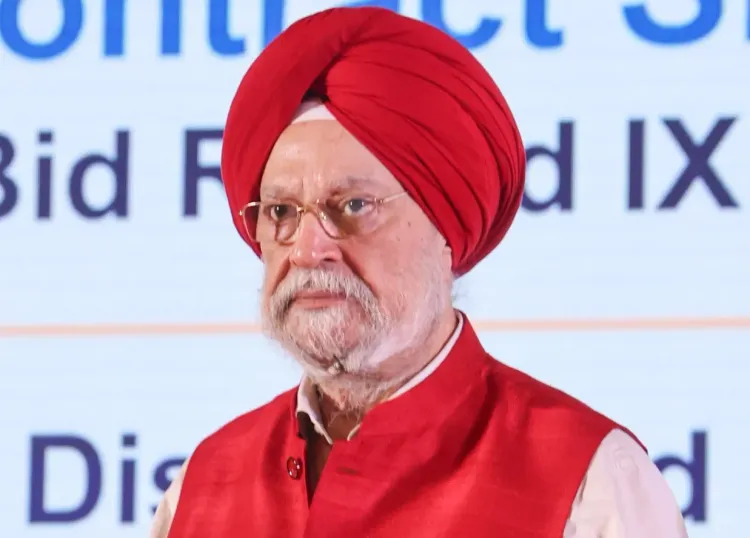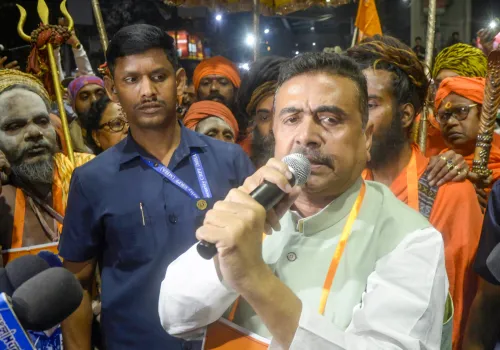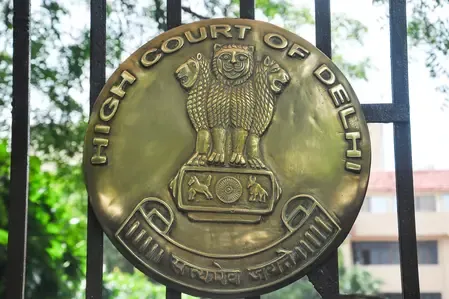What Potential Lies in India's Andaman Sea for Oil Exploration?

Synopsis
Key Takeaways
- India is exploring 250,000 sq km of oil and gas under the OALP.
- Target to expand exploration acreage to 500,000 sq km by 2025.
- Reduction of 'No-Go' areas by 99% frees up over 1 million sq km.
- India aims for net-zero emissions by 2070.
- Focus on biofuels as a crucial part of energy transition.
New Delhi, July 9 (NationPress) India is set to enhance its oil and gas exploration initiatives with renewed vigor, covering an area of 250,000 sq km in Round 10 under the Open Acreage Licensing Policy (OALP), announced Hardeep Singh Puri, Minister of Petroleum and Natural Gas, at the 9th OPEC International Seminar in Vienna, Austria.
“We are on the brink of discovering an oilfield comparable to Guyana in the Andaman Sea, and this is part of one of India's most ambitious plans to boost hydrocarbon exploration under the dynamic leadership of Prime Minister Narendra Modi,” the minister stated, addressing global energy leaders at the seminar.
Puri emphasized that India aims to expand its exploration area to 500,000 sq km by 2025 and 1,000,000 sq km by 2030.
This vision is backed by significant policy reforms, including a shift from a Production Sharing Contract regime to a Revenue Sharing Model under HELP, along with amendments to the ORD Act 1948 to establish a comprehensive framework for lease management, safety improvements, dispute resolution, and the integration of renewable energy in hydrocarbon projects, Puri detailed.
He also noted the reduction of 'No-Go' areas by 99%, which frees up over 1 million sq km for exploration and production, coupled with substantial investments in basin data through national initiatives like the National Seismic Program (NSP), Andaman Offshore Project, Mission Anveshan, and the Extended Continental Shelf Survey, thereby establishing a robust data-driven foundation for India's upstream growth.
Puri further articulated that as the world’s third-largest energy consumer with a daily demand of approximately 5.4 million barrels of oil, India's energy strategy is characterized by pragmatism, resilience, and fairness.
“India serves as a pivotal growth engine and a long-term stabilizer for global oil markets. We anticipate contributing about 25% to the incremental growth in global energy demand in the coming years,” he observed.
He added that India is adeptly navigating the current volatile global energy landscape through a multi-faceted approach, which includes diversifying crude import sources from 27 to 40 countries, boosting domestic production, developing alternative fuel sources, and transitioning towards a gas-based economy.
Additionally, India aims to establish itself as a global refining hub by increasing its refining capacity to 310 MMTPA by 2028 and expanding petrochemical capacity to become a $300 billion industry by 2030.
Puri highlighted that despite geopolitical challenges, India has effectively managed the trilemma of energy availability, affordability, and sustainability, being the only major economy to reduce fuel prices while global oil prices soared. The nation aspires to achieve energy independence by 2047 and reach net-zero emissions by 2070.
He firmly believes that biofuels play a crucial role in the global energy transition, particularly for nations balancing development with decarbonization.
“We have initiated the Global Biofuels Alliance, comprising over 29 countries and 14 international organizations, working collaboratively to scale up sustainable biofuels. Domestically, India is accelerating the utilization of ethanol, CBG, biodiesel, and SAF as part of our decarbonization strategy,” the minister concluded.










